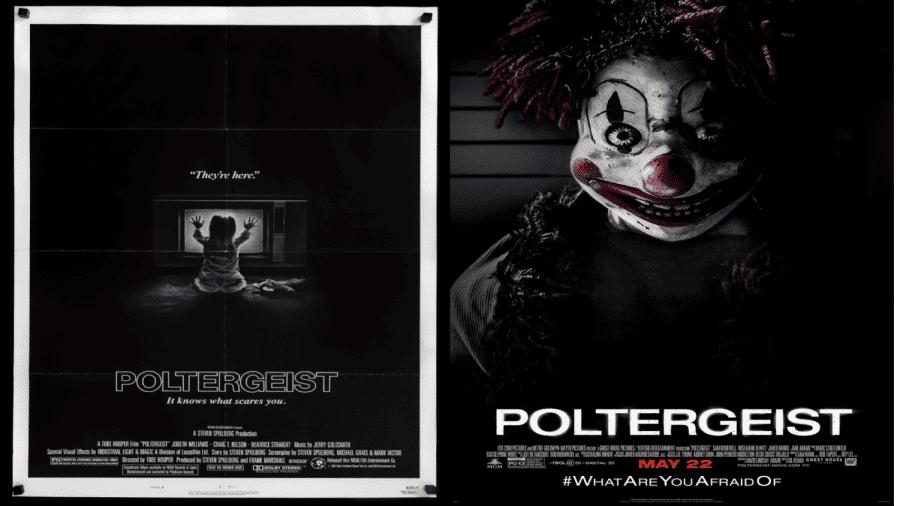Opinion | Horror spinoffs are destroying the classics
October 31, 2021
In a world crowded with subpar to downright questionable movie remakes, movie enthusiasts and the general public alike are thirsting for fresh tales with diverse concepts that push boundaries. Today, the horror genre is best known for its tendency to churn out remakes from the glory days of haunted summer camps, dreamwalking serial killers and possessed children.
Despite an array of technological resources at their disposal, horror movies that are able to stand the test of time are few and far between, leaving a huge crack in the foundations for two-bit remakes to steal the silver screen.
The Golden Age of Horror
From the instantly recognizable theme song of “Halloween” to Freddy Krueger’s terrifying claw hand in “A Nightmare on Elm Street,” and even the heart-pounding silence in the high school gym as “Carrie” finds herself doused in pig’s blood, the ’70s and ’80s are often regarded as “The Golden Age of Horror.”
Horror films reached their first groundbreaking peak in the ’70s and ’80s when popular culture eagerly consumed tales of the occult, stories of demonic possession and slasher films in insurmountable heaps.
Without today’s CGI and special effects makeup at their disposal, horror movies like “The Exorcist,” “The Shining,” “Jaws” and “Friday the 13th” had to rely on storytelling and music scores to create stomach-turning suspense for their viewers.
Neal Bell, a professor of theater studies at Duke University, said making the distinction between surprise and suspense is what made most original horror movies terrifying despite the low budgets and lack of jump scares.
“Hitchcock used to make this distinction between surprise and suspense. If you see a couple sit down in a restaurant and chat for a while and then a bomb under the table blows up, that’s a surprise,” Bell said. “If you had the exact same scene but the camera went under the table to show you the bomb and then went on the same way, you’d see it a different way because you’d know what is going to happen.”
Bell said the best horror movies play on that type of anticipation rather than relying on “boo” moments, something that typical horror reboots fail to pick up on.
It is understandable why the original “Halloween” and “Jaws” installments will always be scarier than their sequels. Both used suspense to conceal their monsters from the audience’s sight for over half the runtime, leaving room in people’s minds for fear of the unknown to grow.
The terrifying stories told in the golden age of horror not only set the tone for the genre, but also created a blueprint of sorts for future films to abide by.
Horror movies that came after typically abided by rules such as making every character a suspect, making the killer wear some sort of scary mask, or using the “final girl” trope, in which the level-headed and attractive female lead defeats the killer and somehow makes it to safety, only to find that the killer or monster was never really dead at all.
The Next Generation
The golden age of horror has since dissipated into a cluster of lazy knockoffs and pointless reboots serving only as cash grabs. Beginning in the late ’80s and early ’90s, these movies came in the form of sequels and companion films to the original generation of iconic horror films.
Since its 1980 release, “Friday the 13th” has spawned 12 spinoffs, eight of which serve as direct sequels to the original tale of the machete-wielding Jason Voorhees and his mother as they terrorize unsuspecting counselors at Camp Crystal Lake.
A futile attempt to revive the original film was released in 2009 and received predominantly negative feedback from critics, who felt that it did not add anything new to the franchise. The remake, like many others, failed to find a voice or purpose of its own with meaningless characters so dull that one may end up rooting for Voorhees by the end of the movie.
John Carpenter’s original “Halloween” terrified audiences everywhere after its 1978 release, having been filmed by broke film students with only three real pumpkins, a bleached William Shatner mask and a meager budget of $300,000 to work with.
Since then, the never-ending “Halloween” series has become one of the most outlandish attempts to keep a 40 year-old movie franchise going, with 12 movies released and one more set to come out in 2022.
What disappoints “Halloween” audiences is the lack of stakes in each showdown between Jamie Lee Curtis and Michael Myers. Every few years, a new installment is released, bringing with it a cast of unmemorable characters who somehow managed to escape certain death in the movie before.
When the 2007 “Halloween” reboot attempted to build a backstory for Michael Myers riddled with child abuse and negligent parents, the film lost its momentum and mystery by humanizing the monster of the movie. Michael Myers was no longer a dark, ominous force that never seemed to die; he suddenly became a traumatized little boy trapped in a man’s body.
One of the main aspects where this film failed was the way in which Myers’ backstory was delivered, leading audiences to wonder if the directors were suggesting that they pity or sympathize with him due to his troubled childhood.
The time for a sequel to “A Nightmare on Elm Street” came in 2010, when actor Jackie Earle Haley portrayed Freddie Krueger, the nightmare villain made famous by Robert Englund.
This reboot attempted to paint a backstory for the nightmare demon Freddie Krueger in a similar fashion to “Halloween,” but it also sparked discourse about recasting the lead actors who immortalized the original stories.
“Carrie,” “The Texas Chainsaw Massacre,” “The Omen,” “The Blair Witch Project,” “The Ring” and “The Exorcist” are other horror classics of the golden age that have since been dampened by simplified remakes.
Most modern horror remakes have bigger budgets than the originals, overloading the audience with special effects and dizzying cinematography to overcompensate for the lack of acting abilities or storytelling.
Why are there so many remakes?
The tradition of horror remakes doing poorly has spanned several decades, leading many to question why these films continue to be made if few of them garner positive attention. Unsurprisingly, shareholders and investors in these franchises have a hand in movie remakes and are typically motivated by money.
According to Vulture, reboots of successful films appease shareholders and are less of a box office gamble in the long run.
Because slasher flicks of the ’70s were popular the first time around and set the tone for horror movie standards, investors are more likely to be put at ease by greenlighting a remake rather than taking a chance on a new, obscure concept. The remake is more likely to get more press and attention regardless of the quality of the film itself, and fans of the original movie are more likely to flock to see the new one in theaters.
Groundbreaking Remakes
At their core, most horror reboots fail to possess creativity, a sense of purpose and individuality.
Not all are doomed to box office failure, as seen with the back-to-back smash success of 2017’s “It” and 2019’s “It Chapter Two,” both of which offered a refreshed and modernized take on Stephen King’s novel through a tale of camaraderie among a group of outcast children rather than relying on cheap horror tropes.
“It” was the third biggest film opening of 2017, the largest opening for a horror movie ever.
The 2019 remake of “Child’s Play” also garnered significant praise and box office success due to the ingenious concept of making society’s overreliance on technology and artificial intelligence the true villain of the film.
The “It” and “Child’s Play” reboots brought a gust of fresh air into the lungs of audiences by modernizing the films and making drastic changes that worked instead of sticking with the same dated scripts and plotlines from several decades ago.
Looking Ahead
The world isn’t done with cash-grab horror remakes as viewers brace themselves for “Halloween Kills,” the latest “Halloween” installment released on Oct. 15.
However, it seems as though horror cinema is moving towards a new age of psychological, historical and racism-oriented horror, bringing with it diverse casts and directors as well as compelling, purposeful plotlines.
Leading players in today’s horror film genre include Jordan Peele, known for his works “Get Out” and “Us”; Ari Aster, known for psychedelic, psychological horror films like “Hereditary” and “Midsommar”; and James Wan, the director of every film in the “Conjuring” universe.
The mind-bending artistry of new, fresh-faced directors provides promise and optimism for a potential new golden age of horror to arise.











